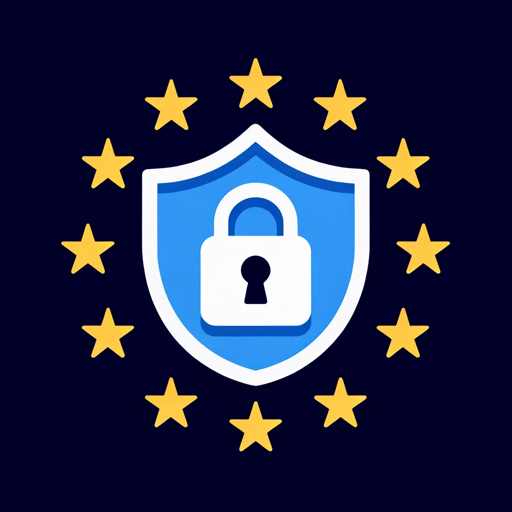European Union Law-AI-driven EU legal insights
AI-powered insights for EU Law
Tell me about the GDPR.
Explain the EU's environmental regulations.
What are the implications of the new EU trade directive?
Can you summarize the EU's data protection laws?
Related Tools
Load More
UK Law
A GPT specializing in UK law, providing accurate, reliable legal information.

US Law
Legal research assistant for US laws at federal and state levels.

GDPR Expert
Legal expert on GDPR, providing sophisticated advice to privacy professionals.

EU Law GPT
Expert in EU legal analysis, detail-oriented responses

AvvocatoGPT - Diritto Italiano & Legge
Esperto in diritto civile italiano, risposte precise e concise.

UK AI Employment Law Adviser
Guides on UK tribunal process and employment rights.
20.0 / 5 (200 votes)
Introduction to European Union Law
European Union Law refers to the body of laws and regulations that have been established by the European Union (EU) to govern member states and their citizens. These laws are designed to ensure the smooth functioning of the EU’s single market, promote peace and stability, protect citizens' rights, and uphold democratic principles. EU Law encompasses various fields such as competition law, environmental law, consumer protection, and data protection. For example, the General Data Protection Regulation (GDPR) is a landmark piece of legislation that protects personal data and privacy of individuals within the EU. Another example is the EU Emissions Trading System (ETS), which is a cornerstone of the EU's policy to combat climate change by reducing greenhouse gas emissions.

Main Functions of European Union Law
Harmonization of National Laws
Example
The Consumer Rights Directive ensures a common set of rules across all EU countries, providing a high level of consumer protection.
Scenario
A consumer in Germany can purchase goods from a French retailer with the assurance that their rights are protected equally in both countries, thanks to harmonized EU legislation.
Ensuring Free Movement
Example
The Schengen Agreement allows for passport-free travel across 26 European countries.
Scenario
A business traveler from Italy can attend meetings in Spain and France without border checks, facilitating smoother and more efficient business operations within the EU.
Environmental Protection
Example
The EU Water Framework Directive aims to protect water resources across Europe.
Scenario
A factory in Poland must comply with EU standards for wastewater treatment, ensuring that their operations do not pollute local water bodies, thereby protecting the environment and public health.
Ideal Users of European Union Law Services
Legal Professionals
Lawyers, judges, and legal scholars who need comprehensive and up-to-date information on EU regulations and directives. They benefit from detailed legal texts and case law to support their practice, research, and decision-making.
Businesses and Corporations
Companies operating in the EU or engaging in trade with EU member states. They require knowledge of EU regulations to ensure compliance in areas such as consumer protection, environmental standards, and data privacy, avoiding legal pitfalls and enhancing their market operations.

Guidelines for Using European Union Law
Step 1
Visit aichatonline.org for a free trial without login, also no need for ChatGPT Plus.
Step 2
Ensure you have a clear understanding of your query or the legal information you need to find.
Step 3
Use the search functionality to look up specific EU regulations, directives, or case law. You can use keywords or specific document numbers.
Step 4
Review the search results carefully, selecting the most relevant documents. Pay attention to the context and applicability of each result.
Step 5
Utilize the browser tool for accessing EUR-Lex or the European Data Protection Board website directly for the latest updates and comprehensive legal texts.
Try other advanced and practical GPTs
Webchat
AI-driven solutions for every question.

Election 2024 Simulator
AI-powered debates, hilarious campaigns.

Your Writing Assistant, Simplified
AI-powered writing made simple.

Prof. Deutsch
AI-powered proofreading for Swiss German.

VocabMaster
AI-powered vocabulary memorization made simple

Pix Muse
AI-driven images from ideas to art.

UN SDG Contribution Verifier
AI-powered tool for verifying SDG contributions.

Interpret de vise
AI-powered dream interpretation made simple.

Life Reflection Deeper Meaning Coach Introspection
AI-powered insights for deeper self-awareness.

Academic Assistant
AI-Powered Academic Excellence

Population Genetics
AI-powered genetic insights for everyone.

UML state diagram generator
AI-powered UML state diagram generator

- Research
- Education
- Analysis
- Compliance
- Policy
Q&A About European Union Law
What is the primary source for EU legal documents?
The primary source for EU legal documents is EUR-Lex, which provides access to European Union law, including treaties, directives, regulations, decisions, and consolidated legislation.
How can I find specific EU directives and regulations?
You can find specific EU directives and regulations by using the search functionality on EUR-Lex, entering relevant keywords, document numbers, or dates to narrow down the results.
What resources are available for understanding data protection laws in the EU?
The European Data Protection Board (EDPB) website offers comprehensive resources on data protection laws, including guidelines, recommendations, and best practices related to GDPR and other data protection regulations.
How does the European Union Law GPT assist with legal research?
The European Union Law GPT assists with legal research by providing detailed information on EU regulations and directives, accessing the latest updates from EUR-Lex and EDPB, and offering guidance on how to interpret and apply EU law.
What are common use cases for the European Union Law GPT?
Common use cases include academic research, legal analysis, compliance checks, policy development, and gaining a deeper understanding of specific EU legal frameworks.